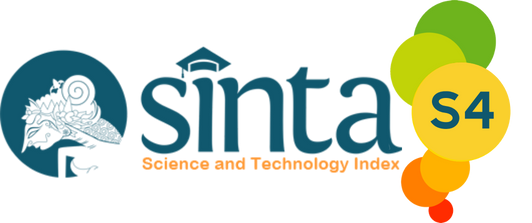Efektivitas Media Bingo Untuk Pembelajaran Kosakata Bahasa Jepang Pada Siswa SMA
DOI:
https://doi.org/10.24036/omg.v6i2.718Keywords:
Effectiveness, Vocabulary, Bingo MediaAbstract
Based on researchers' observations, the study is in the background because students often find it difficult to memorize a Japanese vocabulary. The purpose of this study is to know the effectiveness of bingo media for the study of the Japanese vocabulary in high school students. The type of research used in this study is a quantitative study with a pre-design research design. The research design used was one group pretest posttest. The sample in this study is sophomores 1 as many as 20 students. Sampling retrieval in this study uses an impressive sampling technique. The data in this study is the result of pretest and posttest. The instrument used to collect data on an objective test of multiple choice as much as 30 grains of matter. Based on the calibrated test results can be seen from the value of sig (2-tailed) 0,000 < 0.05. H1 is accepted and h0 is denied, which leads to the conclusion that media bingo is significantly effective for the studies of the Japanese vocabulary of sophoma-grade science 1 high school pgri 1 padang. In addition, students have improved their study of Japanese vocabulary after using media bingo. This increase can be seen from an average of 58 pretests and posttests to 86.
References
Arikunto, S. (2010). Prosedur Penelitian: Suatu Pendekatan Praktik. Yogyakarta: PT. Asdi Mahasatya.
Jufri, J., & Yani, D. (2018). Efektivitas Metode Somatis Auditori Visual Intelektual (SAVI) Terhadap Kemampuan Goi Siswa Kelas XI SMA Negeri 2 Padang Panjang. Omiyage: Jurnal Bahasa dan Pembelajaran Bahasa Jepang, 1(2).
Rofiqoh. (2010). Penerapan Starategi Belajar Aktif Ala Permainan Bingo dalm Pembelajaran Langsung untuk Meningkatkan Hasil Belajar Matematika Siswa Kelas V SDN 013 Desa Baru. Skripsi. Universitas Islam Riau. Pekanbaru.
Rohmiati, D. P dan Supriyono. (2012). Penerapan Permainan Bingo dalam Model
Pembelajaran Kooperatif Tipe NHT (Numbered Heads Together) pada Materi
Cahaya di Kelas VIII SMPN 2 Jombang. Skripsi. Universitas Negeri
Surabaya.
Sadiman, dkk. (2006). Media Pendidikan: Pengertian, Pengembangan, dan Pemanfaatannya. Jakarta: PT. Raja Grafindo.
Suciaty, P., Arni, R., & Haq, M. (2022). Persepsi siswa terhadap Penerapan Model Pembelajaran Flipped Classroom berbasis video pada Pembelajaran Moji Goi. Omiyage: Jurnal Bahasa dan Pembelajaran Bahasa Jepang, 5(2), 212-220.
Sudjana, (2005). Metode Statistika. Bandung: Tarsito.
Sudjianto dan Dahidi. (2009). Pengantar Linguistik Bahasa Jepang. Bandung: Kesaint Blanc.
Sudrajat, H. N., & Herlina, H. (2015). Meningkatkan Pemahaman Kosakata Bahasa Inggris Melalui Metode Permainan Bingo. JIV-Jurnal Ilmiah Visi, 10(2), 114-121.
Sugiyono. (2010). Metode Penelitian Pendidikan: Pendekatan Kuantitatif, kualitatif, dan R&D. Bandung: Alfabeta.
Sujana, I. M., & Narasintawati, L. S. (2015). PENERAPAN PERMAINAN ‘BINGO’DALAM PEMBELAJARAN TEKS DESKRIPTIF BAHASA INGGRIS TINGKAT DASAR. Jurnal Ilmiah ‘Widya Pustaka Pendidikan, 3(1), 28.
Sutedi, Dedi. (2018). Penelitian Pendidikan Bahasa Jepang. Bandung: Upi Press.
Tarigan, H. G. (2011). Pengajaran Kosakata. Bandung: Angkasa.
Wikarya, R. 0., & Putri, M. A. (2021). Pengaruh Metode Power Teaching Terhadap Penguasaan Goi Tingkat Dasar. Journal Japanese Languange Education and Linguistics, 5(2), 168-183.
Yulaekha, N. R., Sudana, I. M., & Arief, U. M. (2017). Efektivitas Permainan Bingo dalam Pembelajaran Program Aplikasi Kelas VII SMP Negeri 25 Purworejo. Edu Komputika Journal, 4(1), 1-1.









